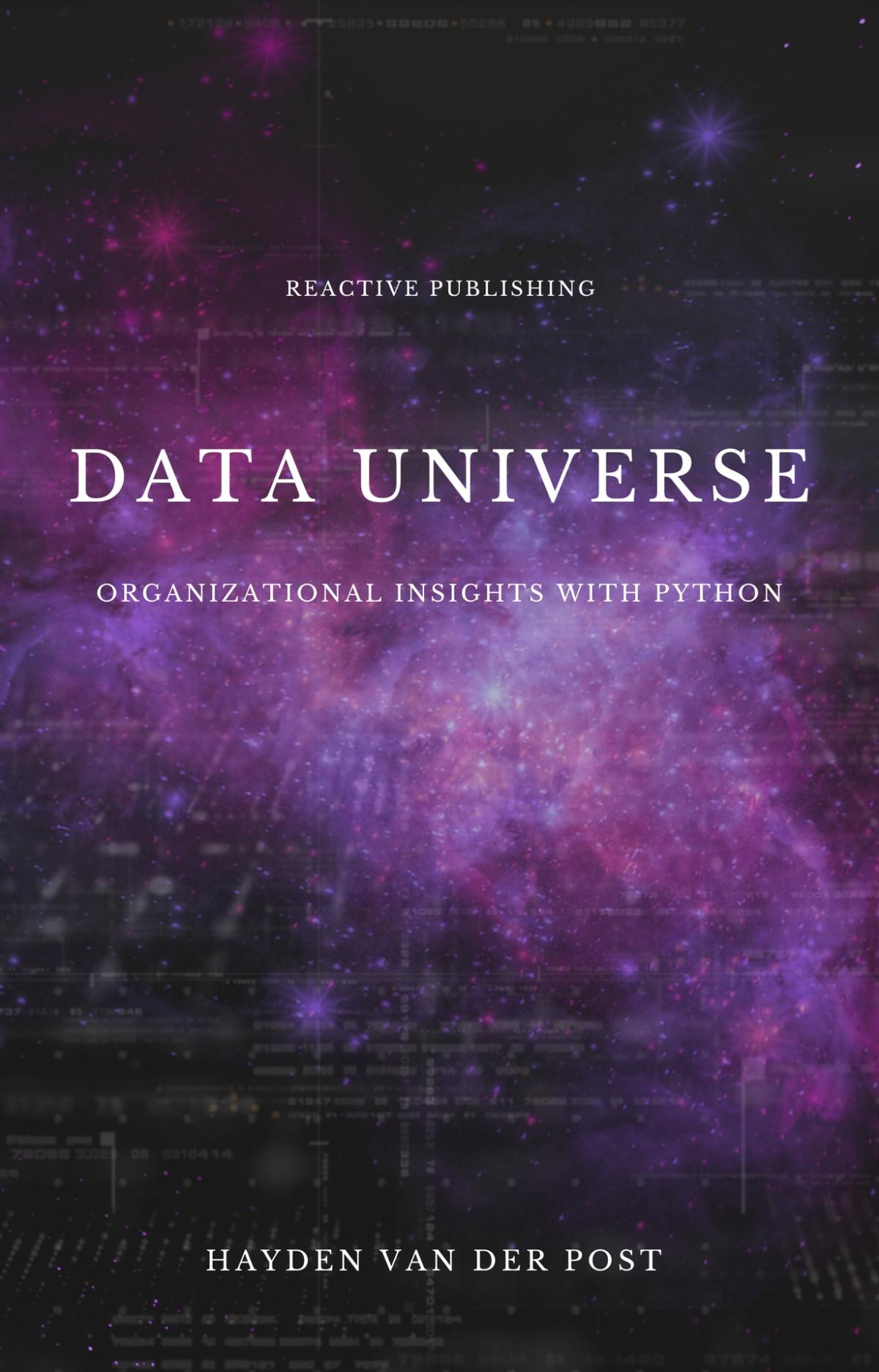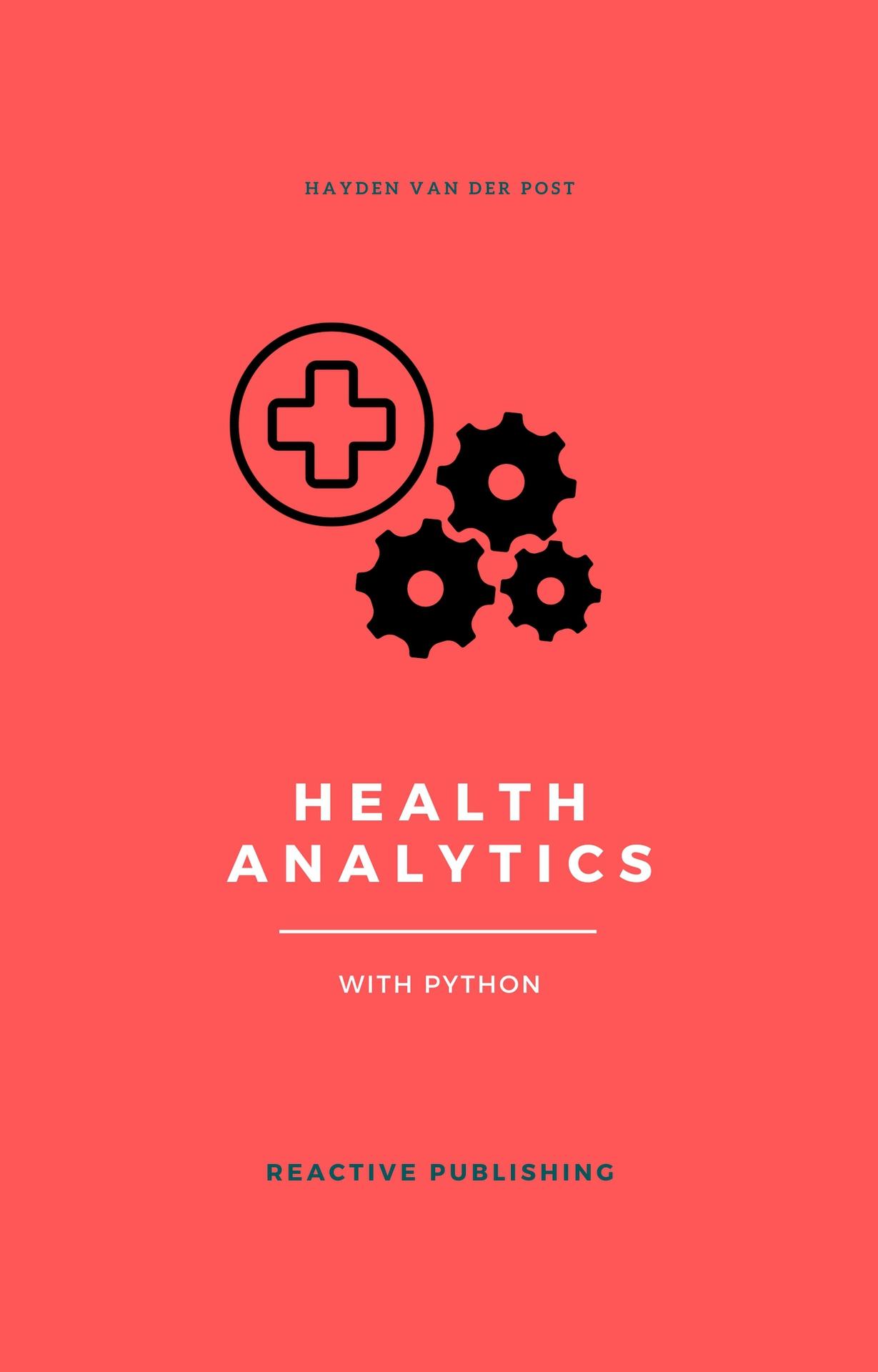CHAPTER 1: INTRODUCTION TO PYTHON IN HEALTHCARE
The journey of Python within health data science truly began in the late 2000s, when the explosion of data transformed the healthcare sector. The need for a language that could handle vast datasets, while being flexible and easy to learn, made Python the ideal candidate. Consequently, Python's adoption was not just an evolution—it was a revolution in how healthcare data was analysed and interpreted.
Around the turn of the decade, several pivotal libraries were introduced, bolstering Python's position as the lingua franca of data science. NumPy brought efficient array computation, while pandas facilitated data manipulation and analysis with dataframes—structures ideally suited to handling medical datasets. Matplotlib and later seaborn provided powerful visualization tools, essential for discerning patterns and correlations in clinical data.
As the adoption of electronic health records (EHRs) became commonplace, Python proved indispensable. Researchers and clinicians required tools to parse and scrutinize this new wealth of digital health information. Python's libraries like PyDicom for reading DICOM files, a standard for medical
imaging, and libraries for processing EHRs like FHIR, became integral to the healthcare data workflow.
The era of big data brought with it machine learning, and Python was once again ahead of the curve. Scikit-learn, TensorFlow, and Keras enabled even those with a nascent understanding of machine learning principles to build predictive models. Models that could foresee patient outcomes, optimise treatment pathways, and even identify potential epidemics became a reality, constructed from the foundation Python offered.
One cannot discuss Python's role in health data science without acknowledging its impact during global crises. During the COVID-19 pandemic, Python was instrumental in modeling the spread of the virus, analysing its genomic sequence, and managing the deluge of data that inundated health systems. Real-time dashboards and statistical models, often developed in Python, informed policy decisions and public health responses that saved lives.
In Vancouver, a city renowned for its tech scene, Python was used to amalgamate data from disparate health systems, helping to manage the caseloads in hospitals during the pandemic. Local data scientists used Python to build predictive models that informed resource allocation, such as ventilators and hospital beds, which were critical during the peaks of the healthcare crisis.
Today, Python's influence continues to grow as health data science dives into new frontiers like genomics, precision medicine, and neural networkdriven diagnostics. Its evolution is characterized by a symbiotic relationship with the healthcare sector: Python advances, and health data science finds new horizons to explore.
Emergence of Python in Data Science
The emergence of Python as a powerhouse in data science is a tale of serendipity and strategic foresight. It began quietly, as academic institutions and a few forward-thinking enterprises started to experiment with Python's potential for data analysis tasks. Initially overshadowed by stalwarts like R
and MATLAB, Python's journey in the data science world was not meteoric but marked by steady, persistent growth.
Python's user-friendly syntax appealed to non-programmers, including statisticians and analysts, who found its readability conducive to rapid learning and application. This was particularly advantageous as the data science discipline itself was evolving, requiring professionals who could bridge the gap between statistical theory and computational practice.
The tipping point for Python's rise in the data science community was the development and improvement of several key libraries tailored to data analysis and scientific computing. The SciPy ecosystem, which included NumPy for numerical operations and pandas for data wrangling, provided the foundational tools necessary for data scientists to transition from theory to practice with ease.
Moreover, the language's interoperability and its ability to glue disparate systems together made it a favorite for integrated data science workflows. As open-source software, Python encouraged collaboration and sharing, which rapidly accelerated the development of a rich ecosystem of data science libraries and frameworks.
In the context of healthcare, Python's ascendancy was bolstered by the specific demands of medical data analysis. The healthcare industry required a tool that could handle the complexities of medical data, from varied data types like imaging and genomic sequences to time-series data from patient monitoring devices. Python's simplicity and the rich suite of libraries, such as BioPython for biological computations and PyHealth for healthcare analytics, made it an ideal fit for the domain.
The capacity of Python to deal with large datasets, a staple in the healthcare industry, further cemented its position. Libraries like Dask and Vaex extended Python's ability to work with "big data", enabling the analysis of datasets too large to fit into a single machine's memory, without the need for complex distributed computing setups.
Python's contribution to data science became conspicuously evident during global health crises, where rapid data analysis was crucial. Its role in streamlining data flows, from collection and cleaning to modeling and visualization, allowed health professionals and decision-makers to respond to critical situations with unprecedented agility.
In the classroom and the lab, Python became the teaching language of choice, shaping new generations of data scientists. Its pragmatism and versatility prepared students for the real-world challenges they would face, particularly in the multifaceted landscape of health data science.
As Python's prominence in data science grew, so did the platforms supporting it. Jupyter Notebooks emerged as a popular interactive environment, allowing data scientists to combine executable code with narrative text and visualizations. This proved invaluable in sharing research findings, educating peers, and streamlining collaborative projects in both academic and healthcare settings.
Understanding Basic Data Types: Strings, Integers, Floats
In Python programming for healthcare data science, an astute understanding of basic data types is imperative. These foundational types are the atoms of the data universe, forming the substance from which complex data structures and nuanced analysis are crafted.
Strings, encapsulated within either single (' ') or double (" ") quotes, are sequences of characters representing textual data. In healthcare data science, strings are omnipresent, encompassing anything from patient names to diagnostic codes. They enable the representation of non-numeric data within a dataset, a crucial feature considering the extensive use of text in medical records, prescriptions, and notes.
Consider a patient's record that contains a string "Diabetes Mellitus Type 2" as a diagnosed condition. This text, stored as a string, becomes a key piece of data for analysis, classification, and potential alignment with treatment protocols. Python provides a multitude of methods to manipulate and process strings, such as `split()`, `replace()`, and `upper()`, which can be
leveraged to standardize and prepare textual data for further data science tasks.
Integers are whole numbers without a decimal point. In healthcare datasets, integers are used to represent discrete data such as the number of hospital admissions, patient room numbers, or the count of a particular type of white blood cell. An understanding of integers is essential, as they are frequently used in statistical models and calculations across health data analysis.
For instance, when dealing with patient age demographics, integers provide a clear and concise representation that can be easily compared and calculated upon. Python's innate ability to handle arithmetic operations with integers allows for efficient computation when assessing metrics like the average age of patients with a certain condition or the distribution of ages within a study population.
Floats, the third basic data type, are numbers that include a decimal point. They are vital for representing continuous measurements in medical data, such as body mass index (BMI), blood pressure readings, or medication dosages. These values require the precision that floats offer, especially when the difference of small decimals can significantly impact a patient's health outcome.
Take, for example, the administration of a drug where dosage needs to be calculated based on patient weight; floats allow for the precision needed in this calculation. With Python's float division, even when both operands are integers, a float result is returned, ensuring precise outcomes in every calculation.
Both integers and floats fall under the wider category of numbers within Python, and they can be freely converted between each other to suit the needs of different datasets. This flexibility is fundamental for health data scientists, who must frequently normalize data and convert between measurements units.
Complex Data Structures: Lists, Tuples, Dictionaries, and Sets
In the analytical orchestra that is Python programming for health data science, complex data structures are the ensembles that harmonize disparate elements into a coherent symphony of information. As we dive into these structures, we unveil their unique characteristics and their indispensable role in organizing, storing, and manipulating data efficiently.
Lists in Python are mutable sequences, capable of storing an ordered collection of items, which can be of different data types. In healthcare data science, lists are akin to versatile containers, ideal for housing sequential data such as patient vitals over time or a series of laboratory test results.
Imagine a scenario involving the tracking of a patient's cholesterol levels. A list allows for the appending of new data points as they are received, the convenient retrieval of any specific measurement, and the easy sorting of results for trend analysis. Lists also support comprehensive slicing, enabling health data scientists to segment sequences for focused investigations.
For exemplification:
```python
cholesterol_levels = [200, 189, 204, 199, 178]
cholesterol_levels.sort() # Sorting to find trends
print(cholesterol_levels)
Tuples are immutable sequences, which means once they are created, their content cannot be altered. This quality makes tuples reliable vessels for fixed data groupings such as the coordinates of a hospital's location or the date of a patient's discharge.
Tuples bring forth a level of data integrity, as their immutability prevents accidental alteration—a crucial feature when dealing with sensitive health information that must remain unmodified for legal and ethical reasons.
An example of a tuple might be:
```python
hospital_location = (49.2827, -123.1207) # Latitude and longitude of Vancouver General Hospital
discharge_date = (2023, 3, 14) # Year, Month, Day
Dictionaries are Python's built-in mapping type. They are unordered collections of items where each item is a key-value pair. Dictionaries are ideal for associating related information, like linking patient IDs to their records or mapping medications to their dosages.
In health informatics, dictionaries facilitate the quick retrieval of information based on unique identifiers—critical in environments where rapid access to patient-specific data can be life-saving.
A simple dictionary example:
```python
patient_medication_dosage = {'Metformin': 500, 'Atorvastatin': 20}
print(patient_medication_dosage['Metformin']) # Outputs: 500
Sets are unordered collections of unique elements. In the context of health data, sets are useful for eliminating duplicates, which is beneficial when compiling unique lists of symptoms, medications, or diseases from a larger dataset.
Sets inherently support mathematical set operations like union, intersection, and difference, enabling health data scientists to perform analysis on distinct groups of data effectively.
Utilizing a set to identify unique conditions:
```python
patient_conditions = set(['Hypertension', 'Diabetes', 'Hypertension'])
print(patient_conditions) # Outputs: {'Hypertension', 'Diabetes'}
Each of these complex data structures—lists, tuples, dictionaries, and sets— serves a distinct purpose and offers a toolset for solving specific problems within the vast domain of health data science. Whether you are constructing patient profiles, managing clinical trial data, or tracking epidemiological trends, understanding and leveraging these structures is fundamental to effective data management and insightful analysis.
Handling Healthcare-Specific Data Structures: FHIR, HL7
In health informatics, data interoperability is not just a technical requirement; it's a conduit for continuity of care, patient safety, and clinical research. Healthcare-specific data structures such as Fast Healthcare Interoperability Resources (FHIR) and Health Level Seven (HL7) are the lingua franca enabling diverse health information systems to converse seamlessly.
FHIR is a standard describing data formats and elements (known as "resources") and an application programming interface (API) for exchanging electronic health records. FHIR is built on modern web technologies and is designed for ease of implementation and integration. It thrives on simplicity and extensibility, making healthcare data exchange more intuitive and efficient.
The following Python snippet demonstrates how one might interact with a FHIR API to retrieve a patient's record:
```python import requests
fhir_endpoint = "https://fhirtest.uhn.ca/baseDstu3/Patient/845439"
response = requests.get(fhir_endpoint)
patient_data = response.json()
print(patient_data['name']) # Accessing the patient's name from the FHIR response
HL7, specifically HL7 Version 2.x, is a set of international standards for the transfer of clinical and administrative data between software applications used by various healthcare providers. These standards focus on the application layer, which is "layer 7" in the OSI model. HL7 helps to simplify the implementation of interfaces among healthcare systems and reduce the complexity of healthcare data integration.
Parsing an HL7 message to extract patient information might look like this: ```python import hl7
# An example HL7 message hl7_message = "MSH|^~\&|HIS|RAD|LAB|CARDIO|202303141605||ADT^A01|MSG0000 1|P|2.6\rEVN|A01|202303141605\rPID|||545776^^^HIS||SMITH^JOHN^A|| 19600407|M||C|1200 N ELM STREET^^GREENSBORO^NC^274011020|GL|(919)379-1212|(919)2713434||S||545776|123456789|987654^NC\r"
# Parse the message message = hl7.parse(hl7_message) for segment in message: if segment[0] == 'PID':
patient_info = segment
print(f"Patient's Name: {patient_info[5]}") # Outputs: Patient's Name: SMITH^JOHN^A
Both FHIR and HL7 play pivotal roles in the management of health data— they encapsulate patient information, clinical observations, diagnostic reports, and treatment outcomes, all of which are essential for a comprehensive understanding of a patient's health narrative.
However, the complexities of these data structures lie not only in their syntax but also in their semantic layers—where the meaning of the data is encoded in the relationships between the elements. It requires a multifaceted approach to handle these data structures proficiently: a thorough understanding of the standards, an ability to navigate or construct APIs, and a keen sense for data quality and integrity.
As health data scientists, the ability to parse, manipulate, and compose FHIR and HL7 messages with Python opens a multitude of possibilities for system integration, data analysis, and, for transforming the quality and delivery of healthcare. The upcoming sections of this book will dive deeper into practical applications and the nuances of these healthcare-specific data structures, offering readers an actionable understanding of how to harness their full potential in the pursuit of health data excellence.
Data Type Conversion and Manipulation Techniques
The versatility of Python in handling various data types is crucial when dealing with the heterogeneity of healthcare data. A deep dive into data type conversion and manipulation techniques reveals the transformative power these processes have on data analysis, especially when data comes from disparate sources and formats.
Data Type Conversion in Python is a fundamental skill for health data scientists. In healthcare datasets, numerical and categorical data often coexist, and the ability to convert between data types is necessary for effective data preparation and analysis. Python's dynamic typing allows for effortless data type conversion, enhancing the fluidity with which one can clean and preprocess healthcare data.
Let us explore how Python facilitates these transformations:
```python
# Convert string to float
blood_pressure = "120.5"
blood_pressure_value = float(blood_pressure)
# Convert integer to string patient_id = 12345
patient_id_str = str(patient_id)
# Convert a list of strings to a list of integers age_years = ["35", "42", "58"]
age_years_int = list(map(int, age_years))
Manipulating Data Types is just as critical. The manipulation of lists, dictionaries, and dataframes is commonplace in Python-driven healthcare analytics. For instance, when working with patient records stored in lists or dictionaries, one might need to add, remove, or update entries as new data becomes available or corrections are made.
Consider the following example, which simulates updating a patient's record:
```python patient_record = { 'name': 'John Smith', 'age': 45, 'blood_type': 'O+', 'allergies': ['Penicillin', 'Peanuts']
# Updating the age patient_record['age'] = 46
# Adding a new allergy patient_record['allergies'].append('Aspirin')
# Removing an incorrect allergy patient_record['allergies'].remove('Peanuts') ```
Dataframes, the cornerstone of the pandas library, are especially powerful for tabular data manipulation. They allow for operations on entire columns or rows, conditional selection, and complex joins and merges. The following snippet showcases a basic dataframe operation: ```python import pandas as pd
# Create a dataframe from a dictionary df = pd.DataFrame({ 'patient_id': [1, 2, 3], 'blood_pressure': [120, 135, 110], 'cholesterol': [190, 220, 185]
})
# Convert blood pressure to a categorical variable df['bp_category'] = pd.cut(df['blood_pressure'], bins=[0, 120, 140, 190], labels=['Normal', 'Elevated', 'High']) ```
Through these examples, one can appreciate the elegant simplicity with which Python handles diverse data types and the robustness it offers in data
manipulation.
Memory Management for Large Health Datasets
In the domain of health data science, the proficient management of memory is paramount, particularly when confronted with the colossal datasets that characterize contemporary healthcare research and practice. The handling of large datasets with aplomb is a testament to the judicious use of Python's facilities, engineered to be both powerful and efficient.
Efficient Memory Usage entails the employment of strategies to minimize memory consumption without compromising the speed or accuracy of data analysis. Python provides numerous avenues for this, and one especially potent tool in the health data scientist's arsenal is the use of `pandas` library with its well-optimized data structures.
Consider the use of `dtype` optimization for reducing memory footprint:
```python import pandas as pd
# Load a large dataset of patient records
patient_data = pd.read_csv('large_health_dataset.csv')
# Optimize memory usage by downcasting numerical columns
float_cols = patient_data.select_dtypes(include=['float']).columns
int_cols = patient_data.select_dtypes(include=['int']).columns
patient_data[float_cols] = patient_data[float_cols].apply(pd.to_numeric, downcast='float')
patient_data[int_cols] = patient_data[int_cols].apply(pd.to_numeric, downcast='integer')
In such a procedure, the application of `downcast` to 'float' and 'integer' can significantly reduce the memory footprint of the dataset by fitting the data into the most appropriate and compact numerical dtype available.
Data Chunking is another technique that shines when manipulating extensive datasets that cannot be readily accommodated in memory. By partitioning the dataset into manageable pieces, one can iteratively process and analyze the data.
A demonstration of chunking a dataset using `pandas`:
chunk_size = 5000 # This can be adjusted based on the available memory chunks = [] for chunk in pd.read_csv('large_health_dataset.csv', chunksize=chunk_size):
# Perform data manipulation on the chunk processed_chunk = process_data(chunk) chunks.append(processed_chunk)
# Concatenate the processed chunks back into a single dataframe full_dataset = pd.concat(chunks, ignore_index=True)
In-Memory Compression techniques, such as those offered by `bcolz` or `PyTables`, are also essential for dealing with voluminous health datasets. These libraries can store data in a compressed format, which both reduces memory usage and accelerates processing time due to lesser I/O operations.
Efficient Data Storage Formats such as HDF5 or Parquet, when paired with Python, allow for sophisticated on-disk storage while still providing the capabilities for fast reading and writing operations, which is pivotal in the context of large-scale health data.
```python
# Write a DataFrame to a Parquet file
df.to_parquet('patient_data.parquet')
# Read the Parquet file back into a pandas DataFrame df = pd.read_parquet('patient_data.parquet')
```
Through judicious use of these memory management techniques, health data scientists can conduct analyses that might otherwise be hampered by the limitations of system memory. The upcoming segments will continue to elucidate advanced strategies for working with substantial health datasets, ensuring that the reader is well-equipped for the rigorous demands of health informatics.
The Art and Science of Loading Health Datasets with Python
As we pivot our focus to the initial stages of data analysis, it becomes evident that the foundational act of loading health datasets into Python is both an art and a science. It requires a meticulous balance of technical knowledge and a nuanced understanding of the data's intricacies.
Loading and Inspecting Health Datasets with Pandas
To initiate our practical exploration, let us consider the import of a dataset containing patient laboratory results. The CSV file format is ubiquitously used for its simplicity and widespread compatibility with various tools and platforms.
```python import pandas as pd
# Importing the dataset lab_results = pd.read_csv('patient_lab_results.csv')
# Display the initial few records to establish familiarity
print(lab_results.head())
The `head()` method is instrumental in providing a sneak peek into the dataset, revealing the initial rows and allowing for a preliminary assessment of the data structure at a glance. With healthcare data often varying in quality, the initial inspection is a crucial step that informs the strategy for cleaning and preprocessing.
The next stage in our inspection is to perform a thorough quality check, utilizing Pandas' functionality to summarize the dataset, thus unveiling any apparent issues or peculiarities such as missing values, which are particularly troublesome in health data due to the potential impact on patient outcomes.
```python
# Dataset summary, including non-null values and data types
print(lab_results.info())
# Identify columns with missing values
missing_values = lab_results.isnull().sum()
print(missing_values[missing_values > 0])
Upon pinpointing the columns with missing values, we can strategize on approaches to handle these effectively, whether through imputation techniques or by consulting clinical experts on the best course of action.
Exploratory data analysis continues as we dive deeper into the dataset's numerical summaries, particularly for variables that are critical indicators of health outcomes, such as cholesterol levels or blood pressure readings.
```python
# Statistical summary of numerical features
print(lab_results.describe())
Descriptive statistics provide a quantitative summary, but for a more nuanced understanding, visual exploration is invaluable. Pandas interfaces gracefully with visualization libraries such as Matplotlib and Seaborn to graphically represent the data, aiding in identifying trends or outliers that could signify data quality issues or real clinical phenomena.
```python
import matplotlib.pyplot as plt
import seaborn as sns
# Visualizing the distribution of cholesterol levels
sns.histplot(lab_results['cholesterol_level'], kde=True)
plt.title('Distribution of Cholesterol Levels')
plt.xlabel('Cholesterol Level')
plt.ylabel('Frequency')
plt.show()
This graphical depiction helps us discern the distribution of cholesterol levels, which is often skewed in the general population, reflecting the propensity for cardiovascular diseases.
Data Cleaning and Preprocessing Techniques
The data cleaning journey commences with addressing inconsistencies and errors that inherently mar health datasets. We shall illustrate this essential process through a Python-driven approach, harnessing Pandas and its cohorts in the data science toolkit.
Initially, we confront the ubiquitous challenge of missing data. Healthcare datasets are notoriously prone to this issue due to myriad factors, from nonresponse in surveys to omitted entries in electronic health records. The strategy for handling such voids must be clinically sound and statistically robust.
```python
# Handling missing data
lab_results.fillna(method='ffill', inplace=True)
In the above snippet, the forward-fill method propagates the last observed non-null value to the next null occurrence within the column. This technique assumes temporal or logical continuity, which might be appropriate for certain types of health data, like continuous monitoring of vital signs.
Next, we turn our attention to erroneous entries and outliers. These aberrations can arise from transcription errors or anomalies in clinical readings. Detecting outliers is not merely a statistical exercise but a clinical one, as some may represent significant but genuine health events.
```python from scipy import stats
# Z-score for outlier detection
z_scores = np.abs(stats.zscore(lab_results._get_numeric_data()))
outliers = (z_scores > 3)
lab_results_clean = lab_results[~outliers.any(axis=1)]
Utilizing the Z-score method, we identify and exclude data points that deviate markedly from the mean. This exclusion must be judiciously
applied, ensuring that clinically relevant outliers are scrutinized rather than discarded indiscriminately.
Another vital aspect of preprocessing is data type conversion. Many algorithms require numerical input, necessitating the conversion of categorical variables into a numerical format—a process known as one-hot encoding.
```python
# One-hot encoding for categorical variables
lab_results_encoded = pd.get_dummies(lab_results_clean, drop_first=True)
The `get_dummies` function metamorphoses categorical variables into a binary matrix representation, an essential step towards preparing the dataset for machine learning models.
Moreover, data normalization is a critical step, particularly in health data where variable scales can vary dramatically—think of enzyme levels versus blood pressure readings.
```python from sklearn.preprocessing import StandardScaler
# Normalizing numerical variables
scaler = StandardScaler()
lab_results_scaled = scaler.fit_transform(lab_results_encoded)
lab_results_normalized = pd.DataFrame(lab_results_scaled, columns=lab_results_encoded.columns)
The `StandardScaler` from scikit-learn standardizes the features by removing the mean and scaling to unit variance, ensuring that no single variable unduly influences the model due to its scale.
These preprocessing steps constitute the meticulous craft of data preparation. Such attention to detail ensures the data's readiness for the analytical rigor that follows. The subsequent sections will further explore the multifaceted process of turning data into decisions, weaving through the intricacies of healthcare data science where meticulous preparation meets thoughtful analysis.
Descriptive Statistics for Health Data Analysis
Commencing on this analytical voyage, we define our central tendencies— the mean, median, and mode—which provide us with a snapshot of the data's distribution. Each measure offers unique insights, with the mean providing the arithmetic average, the median indicating the middle value, and the mode representing the most frequent occurrence.
```python
# Calculating central tendencies
mean_age = patient_data['Age'].mean()
median_age = patient_data['Age'].median()
mode_age = patient_data['Age'].mode()[0]
The snippet above demonstrates the simplicity with which Python, through the Pandas library, allows us to calculate these measures for a hypothetical 'Age' column in a dataset. These measures serve as the stepping stones to deeper analysis.
We then examine the spread of our data through measures of variability such as the range, interquartile range (IQR), variance, and standard deviation. These metrics offer a window into the diversity and distribution of our health data points.
```python
# Measures of variability
range_age = patient_data['Age'].max() - patient_data['Age'].min()
iqr_age = patient_data['Age'].quantile(0.75)patient_data['Age'].quantile(0.25)
variance_age = patient_data['Age'].var()
std_dev_age = patient_data['Age'].std()
By calculating the range, we observe the breadth of our data's span. The IQR tells us about the middle 50%, providing a sense of a dataset's central spread. Variance and standard deviation give us an understanding of how much our data varies from the mean.
It is also crucial to understand the shape of our data distribution, which is where skewness and kurtosis come into play. Skewness measures the asymmetry of the distribution, while kurtosis indicates the 'tailedness'—the presence of outliers.
```python
# Distribution shape metrics
skewness_age = patient_data['Age'].skew()
kurtosis_age = patient_data['Age'].kurtosis()
In the healthcare context, a positive skew might indicate an aging patient population, while high kurtosis could suggest the presence of extreme health events or measurement errors.
As we journey through the landscape of health data, descriptive statistics also call upon graphical representations such as histograms, box plots, and scatter plots to visually communicate the distribution and relationships within data.
```python
import matplotlib.pyplot as plt
import seaborn as sns
# Visualizing the distribution of ages
plt.figure(figsize=(10, 6))
sns.histplot(patient_data['Age'], bins=30, kde=True)
plt.title('Age Distribution of Patients')
plt.xlabel('Age')
plt.ylabel('Frequency')
plt.show()
The code above employs Seaborn and Matplotlib to craft a histogram supplemented with a Kernel Density Estimate (KDE) that allows us to observe the distribution of ages within a patient dataset visually. Similarly, box plots can highlight outliers, and scatter plots can elucidate correlations between variables.
Data Visualization Using Matplotlib and Seaborn in the Health Context
Upon the scaffold of descriptive statistics, we erect the visual edifices that transform raw data into clear, actionable insights. In the world of health data science, adept use of visualization tools like Matplotlib and Seaborn is not just useful—it is imperative. It allows practitioners to elucidate patterns, identify anomalies, and communicate complex findings with intuitive clarity.
Within the Python ecosystem, Matplotlib is the venerable foundation upon which many visualization libraries are built. It offers immense flexibility and control, allowing for the creation of simple line plots to complex multipanel layouts. Seaborn, built on top of Matplotlib, extends its capabilities, providing a more aesthetically pleasing interface and additional plot types designed for statistical exploration.
Let us consider a scenario where we aim to visualize the age distribution of a patient cohort affected by a specific condition. The visualization not only informs about common age-related trends but also brings to light any significant deviations that may warrant further investigation.
```python
import matplotlib.pyplot as plt
import seaborn as sns
# Set the aesthetic style of the plots
sns.set_style("whitegrid")
# Creating a histogram with Seaborn to visualize age distribution
plt.figure(figsize=(12, 6))
sns.histplot(data=patient_data, x='Age', hue='Condition', multiple="stack", palette="viridis")
plt.title('Stacked Histogram of Patient Age by Condition')
plt.xlabel('Age')
plt.ylabel('Number of Patients')
plt.legend(title='Condition')
plt.tight_layout()
plt.show()
The code above generates a stacked histogram that not only reveals the distribution of ages but also segments it by the condition, allowing quick visual differentiation between patient groups. The 'viridis' color palette is chosen for its perceptual uniformity, ensuring that the visualization is interpretable by those with color vision deficiencies.
Further, in health data science, it is often necessary to compare multiple variables to uncover relationships that could be critical for diagnosis or
treatment strategies. A jointplot provides a bivariate scatterplot along with univariate histograms within the same figure, offering a composite view.
```python
# Jointplot of Age and Cholesterol Levels
sns.jointplot(data=patient_data, x="Age", y="Cholesterol_Level", kind="scatter", color='coral')
plt.suptitle('Scatterplot of Cholesterol Levels by Age', verticalalignment='top')
plt.tight_layout()
plt.show()
The jointplot created with Seaborn allows us to observe the relationship between patients' ages and their cholesterol levels. Such insights could be instrumental in developing age-specific screening protocols or targeted interventions.
In a healthcare setting, time is often a critical factor, and line plots can track changes in health metrics over time. Utilizing Matplotlib's plotting capabilities, we can create a line plot that tracks the progression of a health metric, such as average blood pressure readings, over several months.
```python
# Line plot of average monthly blood pressure readings
plt.figure(figsize=(14, 7))
plt.plot(patient_data['Month'], patient_data['Average_BP'], marker='o', linestyle='-', color='indigo')
plt.title('Monthly Trend of Average Blood Pressure Readings')
plt.xlabel('Month')
plt.ylabel('Average Blood Pressure')
plt.grid(True)
plt.show()
The line plot above offers a temporal dimension, revealing trends such as seasonal variations in blood pressure, which could prompt further inquiry into environmental or behavioral factors.
These visualizations serve as fundamental instruments, making opaque numerical data transparent, and allowing the eye to observe what the mind might otherwise miss. It is through these visual narratives that health data scientists can make a profound impact, translating abstract numbers into concrete decisions that can save lives.
Exploratory Data Analysis (EDBest Practices for Health Datasets
In the landscape of health data science, exploratory data analysis (EDis akin to the reconnaissance mission before a full-scale engagement. It is during this stage that data scientists, like medical detectives, sift through the sand of datasets to uncover the pearls of insight that lie beneath. EDA is crucial, as it informs the subsequent steps of model building, feature selection, and, the decision-making processes in healthcare.
The best practices for EDA in health data science are not merely technical procedures; they are a blend of statistical scrutiny, domain expertise, and an understanding of the end goal—improving patient outcomes. Below are key considerations that underscore the EDA process:
1. Data Quality Assessment: Begin by assessing the completeness and accuracy of the dataset. Health datasets often come from various sources and may contain errors, inconsistencies, or missing values that need to be addressed. Tools like pandas Profiling in Python can automate much of this initial data quality assessment.
2. Variable Identification: Recognize and classify variables into numerical or categorical, dependent or independent. This step shapes the analysis strategy and lays out the structure for further investigation.
3. Univariate Analysis: For each variable, perform univariate analysis. Plot histograms or boxplots for continuous variables to understand distribution and identify outliers. For categorical variables, frequency counts or bar charts reveal the distribution across categories.
4. Bivariate Analysis: Conduct bivariate analysis to discover relationships between variables. Scatter plots, correlation matrices, and cross-tabulations can help to detect potential associations or confounding factors that may affect health outcomes.
5. Handling Missing Data: Develop strategies for dealing with missing data, as it can skew analysis and model performance. Options include imputation, using algorithms that can handle missing values, or dropping the missing data, depending on the situation and the amount of data missing.
6. Temporal Analysis: Time series analysis is pivotal in healthcare EDA due to the longitudinal nature of patient data. Python's pandas library offers functionality to handle time series data effectively—analyzing trends, detecting seasonality, and decomposing time series can unveil temporal patterns in health data.
7. Text Data Handling: Clinical notes and reports are rich with information but come in unstructured text form. Employ natural language processing (NLP) techniques to extract features from this text data, which can be crucial for diagnoses or treatment plans.
8. Feature Engineering: Create new features from existing data that could have predictive power or could help in understanding the structure within the data. For instance, calculating the Body Mass Index (BMI) from height and weight could be more informative than considering them separately.
9. Dimensionality Reduction: Health datasets can be large and complex. Use techniques like Principal Component Analysis (PCto reduce the number of variables and to uncover latent features that capture the essence of the data.













